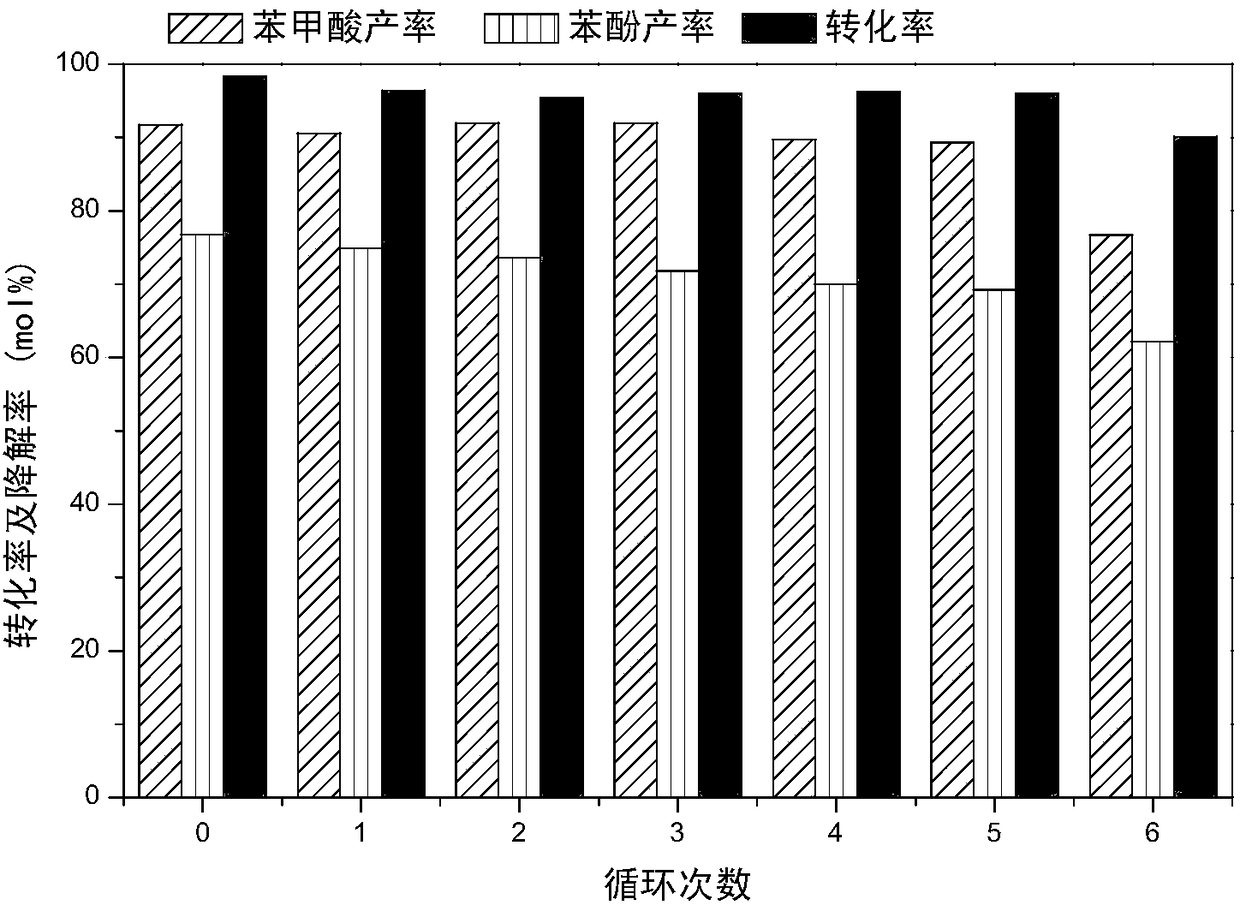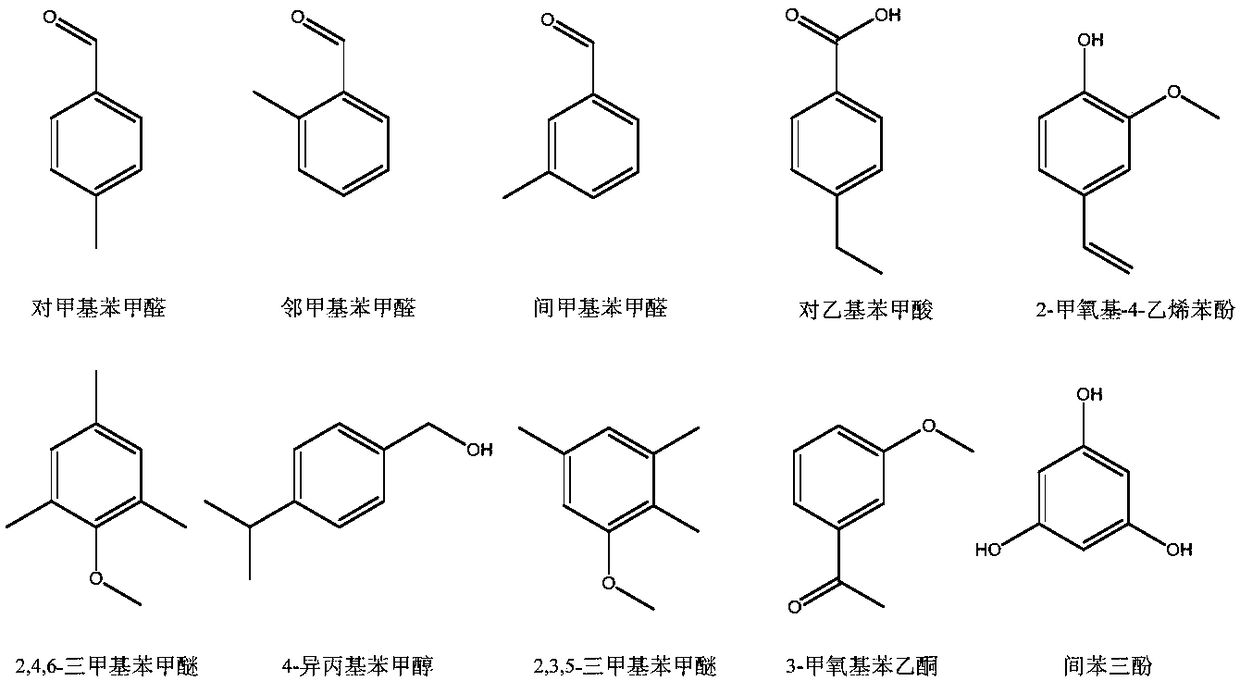Method for degrading lignin and model compound thereof through photocatalytic oxidation
A model compound, photocatalytic oxidation technology, applied in the field of biomass, can solve the problems of difficult operation, high energy consumption, and achieve the effect of high-efficiency catalytic activity
- Summary
- Abstract
- Description
- Claims
- Application Information
AI Technical Summary
Problems solved by technology
Method used
Image
Examples
Embodiment 1
[0031] To the dried 500mg ionic liquid [CPMim]NTf 2 Add 10mg [PrSO 3 HMim]OTf, 10mg lignin model compound A 1 and 20mg of deionized water, under normal pressure air conditions, natural light irradiation, magnetic stirring at 80°C for 1.5h, after the reaction, add 4×2mL methyl tert-butyl ether to the system for extraction and separation. The extracted product was qualitatively and quantitatively analyzed by ultra-high performance liquid chromatography. The analysis results showed that A 1 There is almost no conversion, no phenol and benzoic acid are formed.
Embodiment 2
[0033] To the dried 500mg ionic liquid [CPMim]NTf 2 Add 10mg [PrS O3 HMim]OTf, 10mg lignin model compound A 2 and 20mg of deionized water, under normal pressure air conditions, natural light irradiation, magnetic stirring at 80°C for 1.5h, after the reaction, add 4×2mL methyl tert-butyl ether to the system for extraction and separation. The extracted product was qualitatively and quantitatively analyzed by ultra-high performance liquid chromatography. The analysis results showed that the conversion rate of lignin model compounds was 72.7%, and the yields of benzoic acid and phenol were 59.8% and 71.4%, respectively.
Embodiment 3
[0035] To the dried 500mg ionic liquid [CPMim]NTf 2 Add 10mg [PrS O3 HMim]OTf, 10mg lignin model compound A 2 And 5mg deionized water, under normal pressure air conditions, 254nm wavelength light source irradiation, the radiation energy is 500μW / cm 2 , magnetically stirred at 80°C for 1.5h, after the reaction, 4×2mL methyl tert-butyl ether was added to the system for extraction and separation. The extracted product was qualitatively and quantitatively analyzed by ultra-high performance liquid chromatography. The analysis results showed that the conversion rate of lignin model compounds was 92.6%, and the yields of benzoic acid and phenol were 52.2% and 86.0%, respectively.
PUM
 Login to View More
Login to View More Abstract
Description
Claims
Application Information
 Login to View More
Login to View More - R&D
- Intellectual Property
- Life Sciences
- Materials
- Tech Scout
- Unparalleled Data Quality
- Higher Quality Content
- 60% Fewer Hallucinations
Browse by: Latest US Patents, China's latest patents, Technical Efficacy Thesaurus, Application Domain, Technology Topic, Popular Technical Reports.
© 2025 PatSnap. All rights reserved.Legal|Privacy policy|Modern Slavery Act Transparency Statement|Sitemap|About US| Contact US: help@patsnap.com



